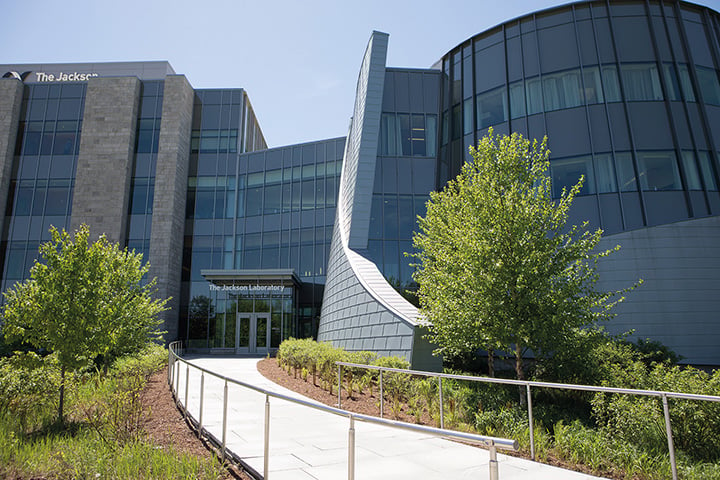Interest and research into the human microbiome have boomed in recent years, and it is now known that the bacteria that colonize the gut of animals and humans play vital functions in health and disease. Despite this, scientists have only just begun to skim the surface of microbiome knowledge, and there is still so much to learn. Researchers in the Adams Lab at the Jackson Laboratory for Genomic Medicine are focused on the creation of different assays and analyses to help study the microbiome.
The Jackson Laboratory for Genomic Medicine, Connecticut, is dedicated to discovering the complex causes of human disease to aid the development of new diagnostic approaches and therapeutics. Jacquelynn Benjamino, a postdoctoral associate, explained: “There has been an explosion in microbiome research, yet we are still mainly working with technologies that were developed before this boom, such as 16S sequencing and shotgun metagenomic sequencing. Although these techniques are good, we need new approaches to further the field. In the Adams Lab, we are exploring various sequencing technologies and tools to help study the role of the microbiome in health and disease.” “There has now been a lot of work conducted on the human microbiome; bacteria have been characterized and cultured, and there is a large reference database for human microbes. Unfortunately, there is a much smaller reference database for the microbiomes of the mouse models that we use in our research. One of the aims of my work is therefore to expand microbiome research for the mouse model, with the eventual goal of translating our research for use in human studies. In the human microbiome, while you do see similar phyla of bacteria – or even maybe similar classes of bacteria – it is fairly personalized to each individual, with different species and strains present. With the mouse microbiome, you have far more homogeneity; this could be because mice have a more homogeneous microbiome, or because they’re co-housed in consistent, near identical environments. Either way, this consistency and reduction in the number of external factors that could influence the mouse microbiome is actually a real benefit to our research.”
 Jacquelynn Benjamino, a postdoctoral associate in the Adams Lab, is creating assays to study the mouse microbiome
Jacquelynn Benjamino, a postdoctoral associate in the Adams Lab, is creating assays to study the mouse microbiome
“We were looking to develop a method that could target specific organisms in a community to sequence, so that we could get a more precise understanding of the organisms that are present. The problem with something like 16S sequencing is that if you use a short region, you might have a bias for which organisms you pick up. We wanted to use a more targeted approach and, although the Allegro® Targeted Genotyping assay would normally be used for SNP analysis on one genome, we thought that we could use the same concept to target multiple bacterial genomes in a system.”
“We began by taking 830 mouse gut bacterial genomes, and designing probes that were specific to each individual genome. We used our bioinformatics pipeline to narrow down a pool of over 80,000 potential probes to around 16,000 – 20 probes per genome – by screening for cross-hybridization to other parts of the same genome, or any of the other 829 genomes. I also worked with one of Tecan’s bioinformaticians to create a set of probes using the company’s proprietary Allegro probe design method, to see if this route would offer a simpler approach for labs without extensive bioinformatics capabilities. Both probe pools were equally usable, and we now use both as technical replicates. The Tecan team also aided us on the data analysis side, assisting with the initial analysis and sending us the typical commands that are used for SNP detection with this kit. I was able to tweak these commands to fit our assay, which was a great help, and the team was super responsive to my queries.”
Switching to Allegro Targeted Genotyping has definitely been a case of work smarter and not harder.
“Switching to Allegro Targeted Genotyping has definitely been a case of work smarter and not harder, as the kit is very straightforward to use once you have designed the probes. The protocol was so easy to follow, everything was outlined very well, and it was great to be able to simply use it and have it work straight away. Another thing that is great about the Allegro assay is the ability to pool samples. By ligating each sample to one of 48 unique barcodes, then pooling up to 48 samples into one tube, you’re working with far fewer samples for the remainder of the protocol. For my work, this took 192 samples down to just four tubes after one step!”
 The Jackson Laboratory for Genomic Medicine is focused on discovering the complex causes of human disease
The Jackson Laboratory for Genomic Medicine is focused on discovering the complex causes of human disease
“While this assay is currently for use in the mouse model, it is easily transferable to others by creating a suitable probe set. I think this approach holds enormous potential for general community surveys or for tracking a certain microbe or pathogen through, for example, wastewater or an animal system. If you want to scale up to 1,000 or 5,000 genomes, you’re going to need a lot of probes, but this is achievable with the Allegro Targeted Genotyping assay, where you can have hundreds of thousands of probes if you have the bioinformatics power. It will be exciting to see how our work progresses using it, and what applications it may have in the future,” concluded Jacquelynn.
To find out more about Allegro, visit www.tecan.com/allegro-targeted-genotyping-v2
To learn more about The Adams Lab, go to www.jax.org/research-and-faculty/research-labs/the-adams-lab
Keywords:









